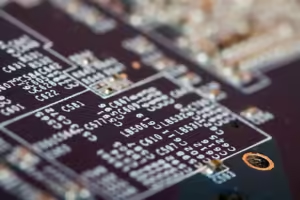Introduction to SystemVerilog operators
System Verilog operators play a crucial role in FPGA design, enabling designers to perform various operations and manipulate data efficiently.
By understanding and harnessing the power of these operators, FPGA designers can enhance the functionality and performance of their designs.

In this comprehensive guide, we will delve into the world of SystemVerilog operators, exploring their types, functionalities, and best practices for utilizing them effectively.
Understanding unary operators in SystemVerilog
Unary operators in SystemVerilog are used to perform operations on a single operand.
These operators can be categorized into three types: increment/decrement operators, logical operators, and bitwise operators.
The increment/decrement operators, such as the “++” and “–” operators, enable the FPGA designer to easily increment or decrement the value of a variable. These operators are particularly useful in scenarios where a counter needs to be incremented or decremented.
Logical operators, such as the “!” (logical NOT), “&&” (logical AND), and “||” (logical OR) operators, are used to evaluate logical conditions and perform logical operations. These operators are commonly used in conditional statements and Boolean expressions.
Bitwise operators, such as the “&” (bitwise AND), “|” (bitwise OR), and “~” (bitwise NOT) operators, are used to manipulate individual bits within a binary representation. These operators are essential for performing bitwise operations, such as setting or clearing specific bits in a register.
It is vital for FPGA designers to have a comprehensive understanding of these unary operators and their functionalities to utilize them in their designs effectively.
Exploring binary operators in SystemVerilog
Binary operators in SystemVerilog are used to perform operations on two operands.
These operators are widely used in arithmetic calculations, comparisons, and logical operations. Understanding and correctly implementing binary operators is crucial for FPGA designers to ensure accurate and efficient design computations.
Arithmetic operators, such as “+”, “-“, “*”, “/” and “%”, are used for basic arithmetic operations like addition, subtraction, multiplication, division, and modulus calculation. These operators are fundamental in FPGA design, enabling the designer to perform mathematical computations.
Comparison operators, such as “==” (equal), “!=” (not equal), “>” (greater than), “<” (less than), “>=” (greater than or equal to), and “<=” (less than or equal to), are used to compare two operands and evaluate a condition. These operators are commonly used in conditional statements and loops to control the flow of the program.Logical operators, such as “&” (bitwise AND), “|” (bitwise OR), “^” (bitwise XOR), and “!” (logical NOT), are used to perform logical operations on two operands. These operators are crucial for evaluating complex logical conditions and Boolean expressions.
By understanding the functionalities of these binary operators, FPGA designers can effectively perform arithmetic calculations, comparisons, and logical operations in their designs.
Using ternary operators in SystemVerilog
Ternary operators in SystemVerilog provide a concise and efficient way to make conditional assignments. The ternary operator “? :” takes three operands and evaluates a condition. If the condition is true, the first operand is assigned; otherwise, the second operand is assigned.
This operator is particularly useful in cases where a simple conditional assignment needs to be made. It eliminates the need for writing lengthy if-else statements, resulting in cleaner and more readable code.
For example, consider a scenario where a variable “x” needs to be assigned the value 10 if another variable “y” is greater than 5, and the value 20 otherwise. Instead of using an if-else statement, the ternary operator can be used as follows:
x = (y > 5) ? 10 : 20;
By utilizing ternary operators, FPGA designers can simplify their code and improve the readability and maintainability of their designs.
Advanced operators in SystemVerilog: concatenation and replication
In addition to the basic unary, binary, and ternary operators, SystemVerilog provides advanced operators for manipulating and combining data. Two such operators are concatenation and replication.
Concatenation operators, represented by the “{}” symbol, combine multiple variables, registers, or literals into a single value. This operator is particularly useful when working with vectors or strings, allowing the FPGA designer to concatenate different parts of data into a single entity.
Replication operators, denoted by the “{n{}}” syntax, are used to replicate a value multiple times. This operator is useful for creating arrays or vectors with repeated values, saving time and effort in writing repetitive code.
By leveraging these advanced operators, FPGA designers can efficiently manipulate and combine data in their designs, enhancing the overall functionality and performance.
Operator precedence in SystemVerilog
Operator precedence refers to the order in which operators are evaluated in an expression. SystemVerilog follows a specific set of rules for operator precedence to determine the sequence of operations.
Understanding operator precedence is crucial for FPGA designers, as it helps in writing correct and unambiguous expressions. It ensures that the operations are performed in the desired order, preventing any unexpected behavior or incorrect results.
SystemVerilog defines a hierarchy of operator precedence, with higher precedence operators being evaluated first. Operators within the same precedence level are evaluated from left to right. Parentheses can be used to override the default precedence and explicitly define the order of operations.
By being aware of the operator precedence rules in SystemVerilog, FPGA designers can write expressions that are clear, concise, and free from any ambiguity.
Overloading operators in SystemVerilog
SystemVerilog allows the overloading of operators, enabling FPGA designers to define custom behaviors for operators when applied to user-defined data types. This feature provides flexibility and extensibility to the language, allowing designers to create custom operators that suit their specific design requirements.
By overloading operators, FPGA designers can enhance the readability and maintainability of their code. They can define intuitive and meaningful operations for user-defined data types, making the code more self-explanatory and easier to understand.
However, it is essential to exercise caution when overloading operators. Overloading should be done judiciously, ensuring that the behavior of the overloaded operator aligns with the expectations of the designer and the intended usage of the operator.
By leveraging the power of operator overloading, FPGA designers can create more expressive and efficient designs, tailored to their specific needs.
Best practices for using SystemVerilog operators in FPGA design
While SystemVerilog operators provide immense power and flexibility to FPGA designers, it is important to follow certain best practices to ensure effective and error-free usage of these operators. Here are some key best practices to consider:
- Use parentheses to explicitly define the order of operations, especially when dealing with complex expressions. This helps in avoiding any ambiguity and ensures that the operations are performed as desired.
- Break down complex expressions into smaller, more manageable parts. This improves code readability and makes it easier to understand and debug.
- Clearly document the usage of operators in the code. This helps in understanding the intention and purpose of the operators, making the code more maintainable.
- Avoid unnecessary or excessive use of operators. It is important to strike a balance and use operators only when they enhance the functionality or readability of the code.
- Regularly test and verify the behavior of expressions involving operators. This helps in catching any potential errors or unexpected behavior early in the development process.
By adhering to these best practices, FPGA designers can harness the full potential of SystemVerilog operators and create designs that are efficient, reliable, and maintainable.
Common mistakes to avoid when using SystemVerilog operators
While SystemVerilog operators provide a powerful toolset for FPGA designers, it is not uncommon to make mistakes when working with them. Being aware of these common mistakes can help FPGA designers avoid pitfalls and ensure error-free designs. Here are some common mistakes to watch out for:
- Forgetting to initialize variables before using them in expressions. Uninitialized variables can lead to unexpected behavior and incorrect results.
- Mixing up the assignment operator “=” with the equality operator “==”. This can result in unintended assignments or faulty condition evaluations.
- Neglecting to consider the data types and sizes of operands when performing operations. Mismatched data types or improper sizing can lead to truncation or overflow issues.
- Overloading operators without fully understanding their implications and potential side effects. Improperly overloaded operators can lead to confusing or incorrect behavior.
- Failing to use parentheses when necessary, leads to ambiguous or incorrect order of operations.
By being mindful of these common mistakes and practicing diligent coding and testing, FPGA designers can avoid unnecessary errors and ensure the correctness and reliability of their designs.
Conclusion
SystemVerilog operators are a powerful toolset that FPGA designers can utilize to enhance the functionality, performance, and readability of their designs. By understanding the different types of operators, their functionalities, and best practices for their usage, FPGA designers can unleash the full potential of SystemVerilog operators in their designs.
Whether it is understanding unary, binary, or ternary operators, exploring advanced operators, or considering operator precedence and overloading, a comprehensive understanding of SystemVerilog operators is essential for FPGA designers. By following best practices and avoiding common mistakes, designers can create efficient, reliable, and error-free designs.
So, dive into the world of SystemVerilog operators, harness their power, and take your FPGA designs to new heights!


![What is FPGA Introduction to FPGA Basics [2023] computer-chip-dark-background-with-word-intel-it](https://fpgainsights.com/wp-content/uploads/2023/06/computer-chip-dark-background-with-word-intel-it-300x171.jpg)









